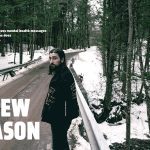Bumbershoot: Bob Dylan either sucked, or he didn’t
Bumbershoot has been a monster music and arts festival, rolling through Seattle every single Labor Day weekend for 40 years now. The 2010 40th Anniversary celebratory lineup kicked off with a steaming stack of rocking rootsy locals and the behemoth celebrity of one Mr. Bob Dylan.
That the highlights of the festival’s first day were mostly Seattle-based bands is unsurprising.
Star Anna & the Laughing Dogs, for one, have been playing their asses off for the past couple of years, and have earned the respect of some of Seattle’s most famous and well-respected players. Early in the day, they broke in the Starbucks stage with the help of Carrie Akre (Hammerbox) on a cover of Elvis Presley’s “Power of My Love,” before welcoming Pearl Jam’s Mike McCready to the stage. As was standard for most of the artists I saw this first day at Bumbershoot, Anna and her band pulled largely from new material they’re working on recording right now. Finest among these new tunes was the set closer, “We’re All Alone in This Together.”
Zoe Muth & the Lost High Rollers delivered a swath of stunning new tunes, as well, and closed their set with a cover of Bob Dylan’s “Song to Woody.” Meanwhile, local power rock outfit Visqueen shared a string of favorites from their ’09 release Message to Garcia. It was a lovely and emotional stripped-down set carried chiefly on the strength of frontwoman Rachel Flotard’s powerful vocals, and rounded out with Christina Bautista on bass and Barb Hunter on cello. I didn’t catch their primary performance of the day, which was later on (during Bob Dylan’s mainstage set), but was pleased to see this stripped-down session, which was broadcast live on KEXP.
Also in the KEXP lounge was Justin Townes Earle, who admitted to not being awake and ready for the day yet when it came his turn to play the intimate venue. Luckily, he got himself pumped a little more before taking to the Starbucks stage a few hours later. There, he performed a tight collection of mostly tunes from the new album, Harlem River Blues – due out on the 14th.
Other buzzworthy sets came from the Maldives (also full of new material), the Decemberists, and Wheedle’s Groove. Edward Sharpe and the Magnetic Zeros scared up so much buzz, it was near impossible to even enter the small field around the stage where they were playing. Try as I might, I couldn’t even get around the corner to a suitable listening-from-a-distance-even-though-I-couldn’t-see-anything spot. So, I packed it in and headed back to the mainstage for the remainder of Neko Case’s excellent show (which mostly featured tunes from last year’s Middle Cyclone).
The whole first day culminated, at last, with a 90-minute set from Bob Dylan.
Now here’s where it gets interesting. Dylan, of course, as you know, doesn’t have the voice he used to have, such as it was. Making out what he’s saying/singing is a bit of a chore, particularly in a large outdoor stadium where the sound system isn’t exactly optimum for the kind of intricate, nuanced arrangements and complicated lyricism on which his music so relies. If you asked any two people at that show, one person probably would have thought it was pure genius, the other would have been utterly disappointed.
I thought it was great.
Forty years ago, when Bumbershoot kicked off its first year, Dylan was, in many ways, at the height of his career. He’d moved away from the Woody Guthrie-esque folk leanings which made him famous in the first place, and was proving to be far more than just the guy who could do what Woody had done. He was asserting through his music that he was, indeed, an artist in his own right. Of course, a lot has changed since then. Both Bumbershoot and Dylan have grown into massive successes. Much like the festival at which he was headlining, Dylan’s career has drawn crowds of nearly unmanageable proportions – crowds expecting from him everything from music to comedy to literature and film, and he’s indulged each of these and more at some point.
This night, he swaggered out and jumped head first into “Rainy Day Women #12 and 35,” starting the song on keys before taking up an electric guitar. He spent the show about half on keys and half on guitar, drawing the most lively reaction from the crowd when he pulled out his harmonica. Classics like “Tangled up in Blue” and “Desolation Row” were re-worked into lush keys-and-pedal-steel-driven rock and roll arrangements. Several of the tunes gave way to extensive instrumental solos that I’d call jams, but that would give the wrong impression. The arrangements were a little too nuanced to be meandering, masturbatory jam breaks. Dylan, indeed, is at his best when leaving those around him room to do their thing.
The night closed with a single-song encore: “Like a Rolling Stone,” which resulted in a rather lively hands-in-the-air emote-a-thon from the folks on the ground. By then, though, I was back up in the stands, kicking it with my mother, who traveled all the way from Florida just to see Bob Dylan for the first time.
Her verdict? Not quite as glowing as mine. Alas.




